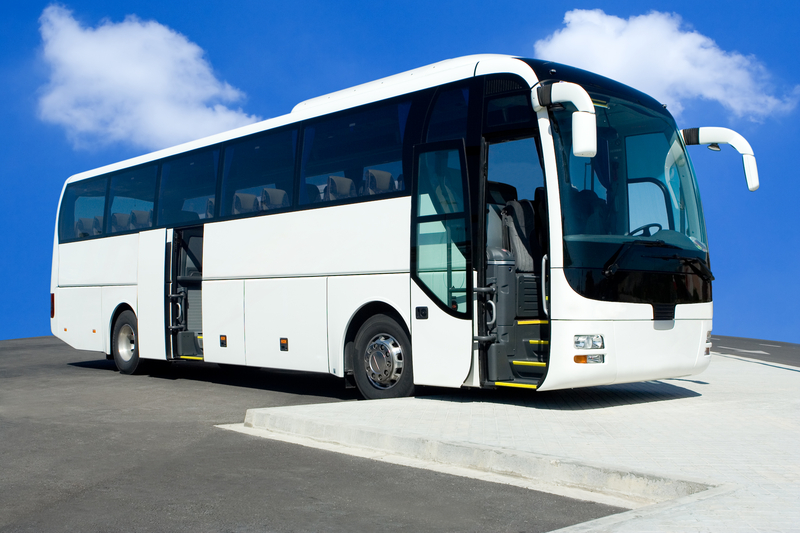Bus tours for senior citizens offer a unique blend of adventure and comfort, catering to the specific needs and preferences of this demographic. This guide explores the key aspects of designing, marketing, and operating successful bus tours tailored to the senior travel experience, addressing considerations such as accessibility, itinerary planning, and safety protocols. We delve into the nuances of creating itineraries that balance engaging activities with ample rest periods, ensuring a memorable and enjoyable journey for all participants.
Understanding the physical limitations and travel preferences of senior citizens is paramount. This involves careful consideration of accessibility needs, preferred pace of travel, and potential anxieties associated with group travel. Effective communication strategies, both in marketing materials and during the tour itself, are crucial for building trust and ensuring a positive experience. From carefully curated itineraries featuring destinations of interest to meticulous safety protocols, we aim to provide a comprehensive overview of best practices in this specialized area of travel planning.
Understanding Senior Citizen Travel Needs
Planning enjoyable and safe bus tours for senior citizens requires a deep understanding of their unique needs and preferences. Failing to consider these aspects can lead to a less-than-ideal experience, potentially impacting their overall enjoyment and even causing discomfort or anxiety. This section will explore the key considerations for creating successful senior-focused travel experiences.
Physical Limitations and Accessibility Requirements
Senior citizens often experience varying degrees of physical limitations, impacting their mobility and comfort during travel. These limitations can include reduced stamina, joint pain, arthritis, balance issues, and difficulties with stairs or uneven surfaces. Accessibility requirements, therefore, are paramount. This necessitates careful consideration of bus features, such as the ease of boarding and disembarking (e.g., ramps, wide doorways, handrails), the availability of accessible restrooms, and sufficient space for wheelchairs or walkers. Tour locations should also be chosen with accessibility in mind, prioritizing locations with level pathways, accessible entrances, and appropriate seating arrangements. For example, a tour featuring extensive walking might be unsuitable and should be modified or replaced with alternatives offering more rest stops and shorter distances.
Preferred Travel Styles and Paces
Senior citizens generally prefer a more relaxed and less rushed travel pace. Long days filled with back-to-back activities can be exhausting and overwhelming. Instead, tours should incorporate ample time for rest and relaxation, perhaps including scheduled breaks for light refreshments or leisurely strolls. The itinerary should be clearly communicated beforehand, emphasizing the pace and duration of each activity, allowing seniors to prepare accordingly. For example, a tour could include longer breaks at scenic overlooks, allowing for comfortable sightseeing without rushing. Moreover, tours tailored to specific interests – such as gardening tours or historical site visits – cater to the diverse preferences within the senior demographic, making the experience more engaging and fulfilling.
Common Concerns and Anxieties Regarding Travel
Many senior citizens experience anxieties related to travel, particularly bus tours. These anxieties may include concerns about health emergencies, getting lost, managing medication, or feeling isolated. Fear of falls is also a significant concern, highlighting the importance of safe boarding procedures and stable seating. Security and safety are key; clear communication regarding emergency procedures and contact information should be provided. Furthermore, tours should strive to create a sense of community and support among participants, reducing feelings of isolation. For example, pre-trip information packets that include emergency contact numbers, medication reminders, and a list of fellow participants can foster a sense of reassurance.
Appropriate Communication Strategies for Marketing Bus Tours to Seniors
Marketing materials for senior-focused bus tours should employ clear, concise, and easy-to-understand language. Large, legible fonts and simple layouts are essential. Emphasis should be placed on the aspects of the tour that cater specifically to senior needs, such as comfortable seating, accessible features, and a relaxed pace. Using images depicting seniors enjoying themselves on similar tours can build trust and relatability. Consider incorporating testimonials from past senior participants to highlight the positive experiences. For example, marketing materials could feature phrases like “Relaxed Pace,” “Accessible Transportation,” and “Comfortable Seating,” clearly conveying the tour’s suitability for seniors. Finally, marketing should be conducted through channels frequently used by seniors, such as senior centers, community newspapers, and targeted online advertising.
Designing Ideal Bus Tour Itineraries for Seniors
Creating enjoyable and manageable bus tour itineraries for senior citizens requires careful consideration of their physical capabilities, interests, and preferences. The goal is to craft an experience that is both stimulating and relaxing, ensuring a positive and memorable journey for all participants. This involves meticulous planning of daily activities, travel times, and rest periods, while also incorporating flexibility and choice to cater to individual needs and preferences.
Sample Multi-Day Bus Tour Itinerary for Seniors
This sample itinerary focuses on a five-day tour, balancing sightseeing with ample downtime. The emphasis is on manageable activities and comfortable pacing. It is crucial to note that specific times and locations can be adjusted based on the chosen destination and the group’s preferences.
| Date | Time | Activity | Location |
|---|---|---|---|
| Day 1 | Morning | Arrival and Check-in at Hotel | Charleston, South Carolina |
| Afternoon | Relaxation and free time | Hotel | |
| Evening | Welcome Dinner with live music | Hotel Restaurant | |
| Day 2 | Morning | Guided Walking Tour of Historic Charleston (gentle pace) | Charleston Historic District |
| Afternoon | Lunch at a local restaurant | Charleston | |
| Late Afternoon | Free time for shopping or exploring | Charleston | |
| Evening | Dinner at a seafood restaurant | Charleston | |
| Day 3 | Morning | Scenic drive along the coast with photo stops | Charleston Coastline |
| Afternoon | Visit to a local plantation (with accessible options) | Plantation near Charleston | |
| Evening | Free time or optional evening activity (e.g., a gentle harbor cruise) | Charleston | |
| Day 4 | Morning | Travel day to Savannah, Georgia | Charleston to Savannah |
| Afternoon | Check-in at Hotel and free time | Savannah, Georgia | |
| Evening | Dinner in Savannah’s historic district | Savannah | |
| Day 5 | Morning | Guided walking tour of Savannah’s squares | Savannah Historic District |
| Afternoon | Departure | Savannah |
Incorporating Flexibility and Choice into Itineraries
Offering choices and flexibility is paramount. Senior travelers have varying energy levels and interests. Providing options allows them to customize their experience, avoiding fatigue and enhancing enjoyment. For example, offering optional activities each day, such as a museum visit or a relaxing spa treatment, allows individuals to choose what best suits their preferences and physical abilities. Building in extra free time also allows for spontaneous exploration or simply resting.
Destinations and Activities Appealing to Senior Citizens
Choosing destinations and activities that cater to the interests and physical capabilities of senior citizens is crucial for a successful tour.
The following examples highlight destinations and activities known for their accessibility and appeal to this demographic:
- Coastal towns with scenic drives and relaxed atmospheres (e.g., coastal Maine, the California coast).
- Historic cities with manageable walking tours and accessible attractions (e.g., Williamsburg, Virginia; Charleston, South Carolina; Savannah, Georgia).
- National parks with accessible trails and stunning scenery (e.g., Acadia National Park, Shenandoah National Park – focusing on easily accessible areas).
- Relaxing spa resorts with wellness activities and comfortable accommodations.
- Small towns with charming shops, local cuisine, and cultural experiences.
- Cruises offering accessible amenities and shore excursions tailored to senior needs.
Senior-Focused Bus Tour Brochure Layout
The brochure should use a clean, uncluttered layout with large, easy-to-read fonts. High-quality images are essential to showcase the destination and activities.
Suggested layout:
Front Cover: A captivating image of a scenic location from the tour (e.g., a charming coastal town, a beautiful garden, or a historic building). The tour title should be prominently displayed in a large, easily readable font, along with the dates and a brief tagline highlighting the key selling points (e.g., “Relaxing Coastal Getaway for Seniors”).
Inside Left Panel: A brief description of the tour, highlighting key features like comfortable transportation, accessible accommodations, and manageable activities. Include a small image showcasing a relaxing activity, like a group enjoying a meal or taking a leisurely stroll.
Inside Right Panel: A detailed itinerary, presented in a clear and concise manner, using bullet points and large fonts. Include a small image showcasing a key attraction or activity.
Back Panel: Contact information, pricing details, and a call to action (e.g., “Book your unforgettable journey today!”). Include a small image of the tour bus or a group of happy seniors on the tour.
Wrap-Up
Creating exceptional bus tours for senior citizens requires a holistic approach, blending thoughtful planning with a deep understanding of the target audience. By prioritizing safety, comfort, and engaging experiences, tour operators can provide enriching travel opportunities that cater to the unique needs and preferences of senior travelers. From accessible transportation and well-designed itineraries to proactive communication and exceptional customer service, the goal is to foster a sense of confidence and enjoyment throughout the journey. Ultimately, the success of a senior-focused bus tour hinges on creating a memorable and enriching experience that leaves lasting positive impressions.



